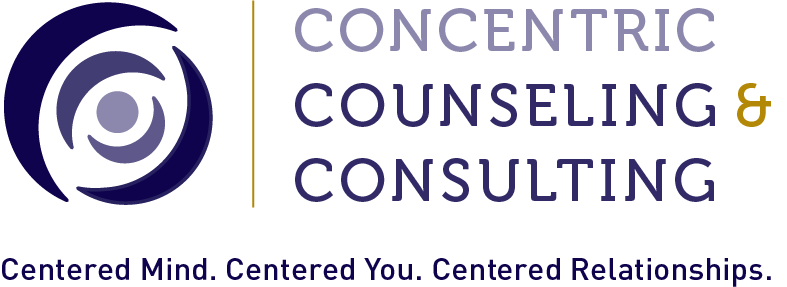Gentle Embodiment
/By Concentric Counselor Emily King, LCPC, NCC
When I notice frustration with frenetic Chicago energy, I often turn my mind towards the mountains. Grounding through imagery has brought me time and time again to the mountains of my childhood. Mount Timpanogos is one of seven major peaks found along Utah’s Wasatch Mountain Range and one of my personal sources of peace.
Years ago, a friend and I began hiking just after midnight to try and reach the summit at sunrise. I‘m reminded of the repetition of those first few hours hiking before daybreak. With time and the quiet repetition of climbing an unfamiliar trail, the mindless chatter of thoughts and anxieties shifted towards personal introspection. Early morning hiking requires a kind of concentration which often feels personally out of reach. I find such comfort within the continuous echo of climbing and breathwork.
The movement allowed me to shift into an individually rare meditative state as I began processing painful dissonance and identity uncertainty. As sunshine began to warm my face and the night became day, a knowing settled into my mind and body. My desire to fully separate from the insular religious culture I had always known and finally accept my queerness was made clear. I can point to those early morning hours as the beginning of my embodiment journey.
The renowned trauma specialist and founder of the Somatic Experiencing (SE) method, Dr. Peter Levine, teaches that embodiment is the joining of one’s cognitive awareness and body-based sensations. The awareness and acceptance that our body is our own. The integration of somatic skills including resourcing, pendulation, and titration can encourage embodiment through gentle reminders that we are more than our minds. More than the solitude of sadness or the suffocation of anxiety.
Resourcing – Resourcing is the practice of inviting our mind/body to attune to sensations of safety or goodness, however small they may be. The process of attending to a felt sense of “okay-ness,” can aid in teaching our nervous system that it can experience stress and return to a state of calm. My resourcing involved intentionally bringing my awareness to that of my social community while allowing that awareness to be felt versus merely imagined.
Pendulation – Pendulation is the natural rhythm between states of expansion and contraction in the nervous system. A resilient nervous system is one that can move back and forth between alertness and action, and calm and rest without getting stuck at either extreme. Pendulation on my hike included allowing introspective moments to be interrupted by levity with my friend and fellow hikers.
Titration – Less is more, slow is best. Titration is the allowing of and honoring one’s desire to not disclose, to pause, and to separate throughout the healing process. I view titration as the autonomous ability to allow our healing to unfold naturally.
For many, it may not feel safe or possible to tune into one’s body sensations or felt sense. The felt sense may be seen as a source of trauma, pain, or hatred. So as not to reactivate our nervous system without proper preparation, it’s important to allow for versus demand embodiment. Trauma aware embodiment is marked by autonomy, invitations, and the ability to pause.
Meeting our body’s cues with curiosity can be one conduit for embodiment. I often encourage gentle movement and breathwork throughout the healing process as an invitation towards the embodied self. When noticing feelings of stuckness or judgment and for those who feel safe when engaging in breathwork, we can return again and again to our breath. Finding sources of anchoring and safety in one’s breath can allow us to join our bodies and orient to the present. Gentle embodiment communicates that we can shift the relationship with our bodies from one of contempt and disregard to one of safety and strength.
Reflection Prompts: Allow this to be a gentle reflective process where you can begin to tune into your body and mind.
· Inviting a few moments of awareness, begin to notice a few body-based stressors (i.e., physical pain, clothing, sensory distress or overload, etc.).
· Which emotions arise when noticing such sensations and stressors?
· What might you need to anchor to your felt sense and validate your emotional experience?
· Inviting you to call to mind ways others have supported you through body-based stress in the past. Noticing sensations linked to memories of support.
· For each stressor, identify one compassion-based statement to turn towards when in distress. If possible, pairing the statement with gentle breathwork or tension/release movements can be incredibly regulating.
Utilizing moving meditation and reflective journaling can increase our ability to safely settle into ourselves, eventually inviting gentle embodiment. While individual and systematic barriers may discourage particular forms of mind/body awareness, my hope remains that embodiment can one day be seen as an accessible and democratized therapeutic tool. I know that the process of intentionally learning to notice and understand my body’s role in my healing has felt incredibly freeing.


